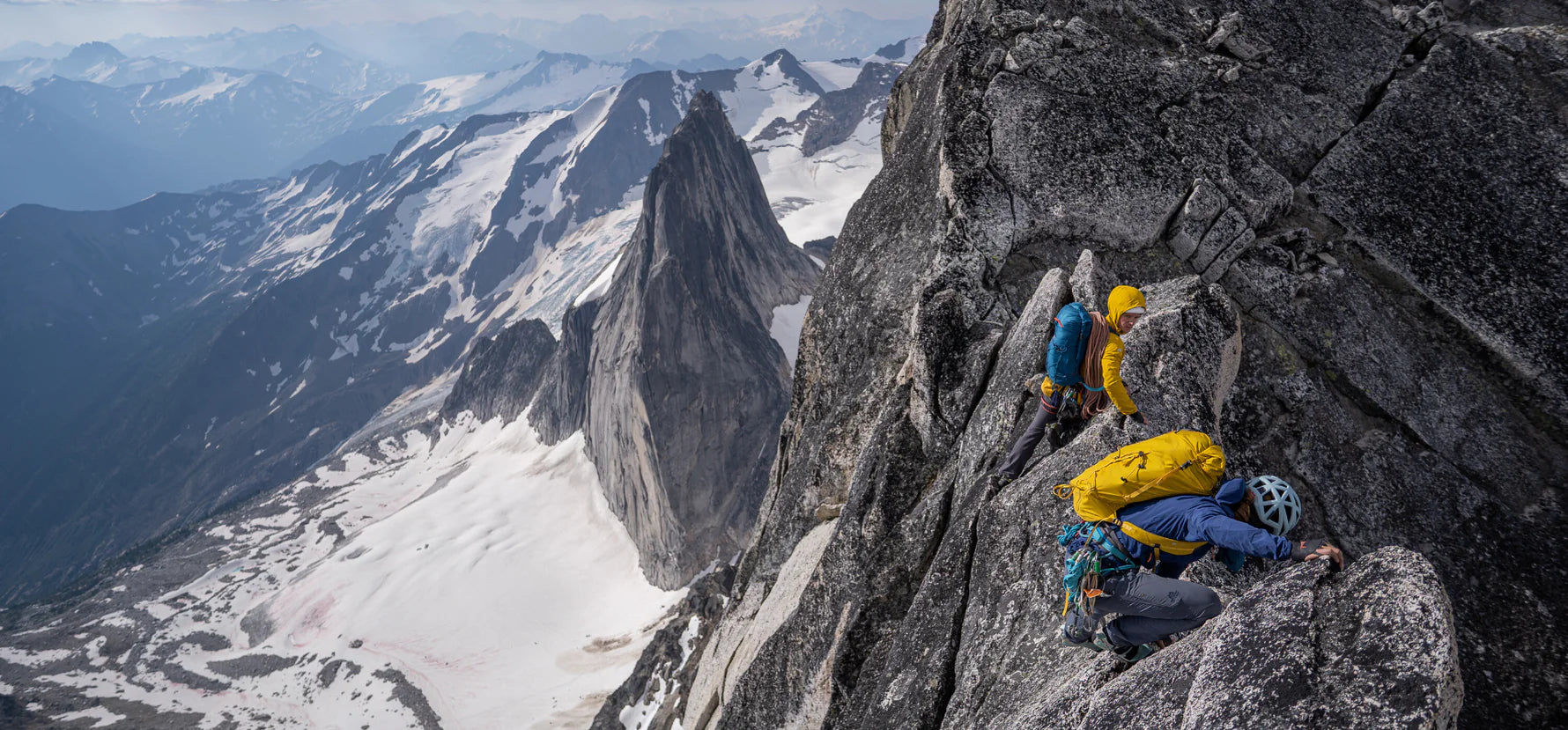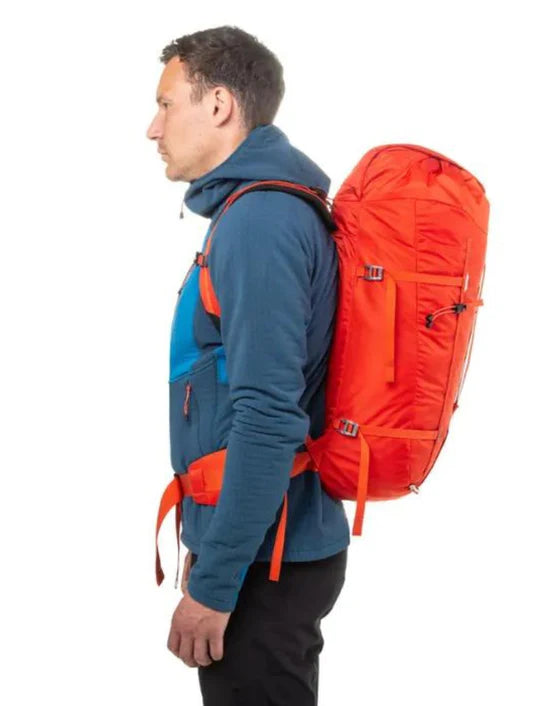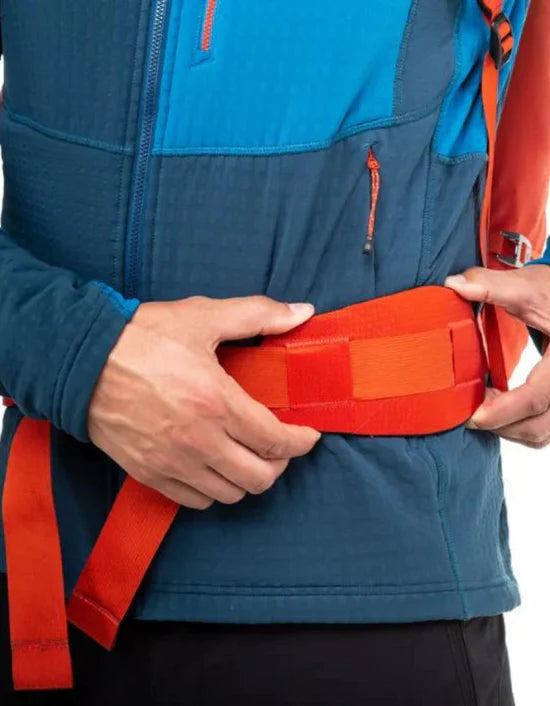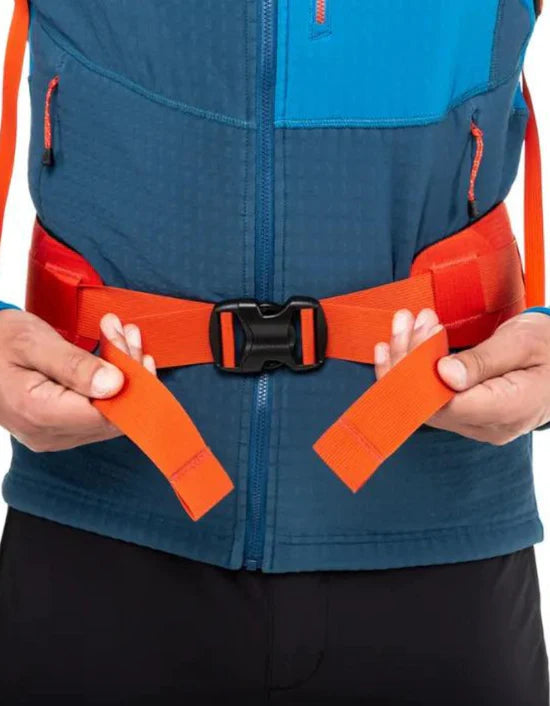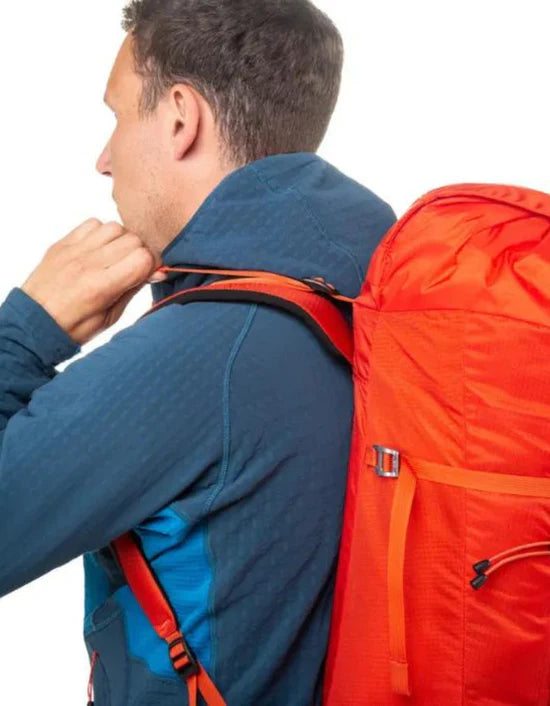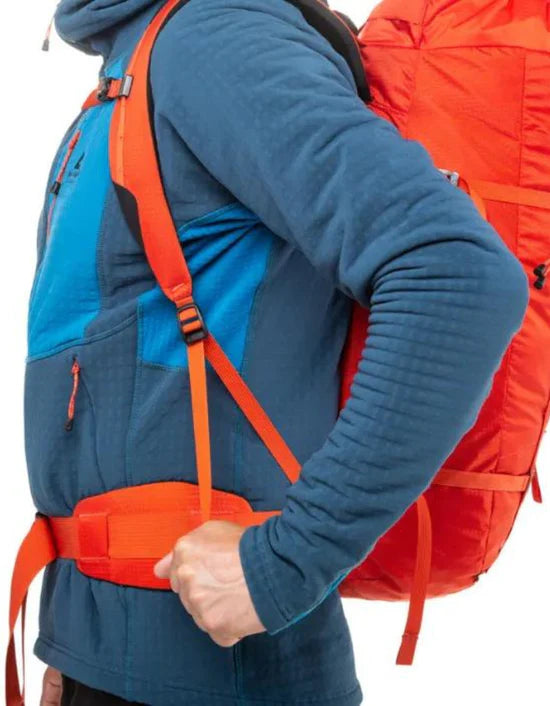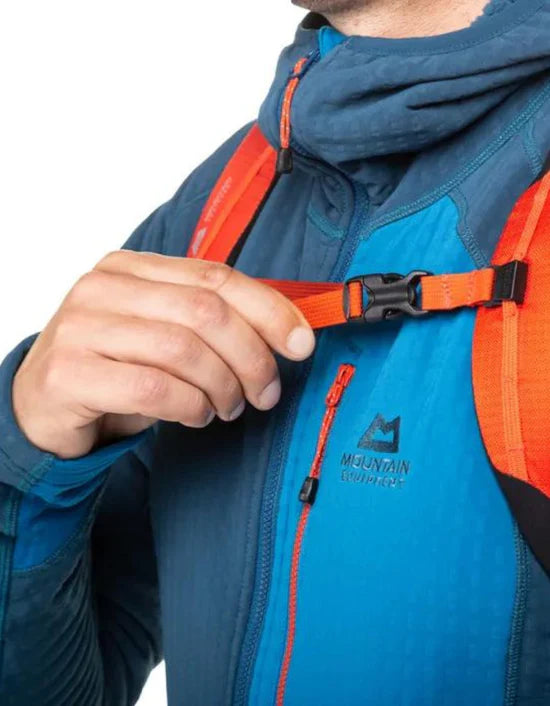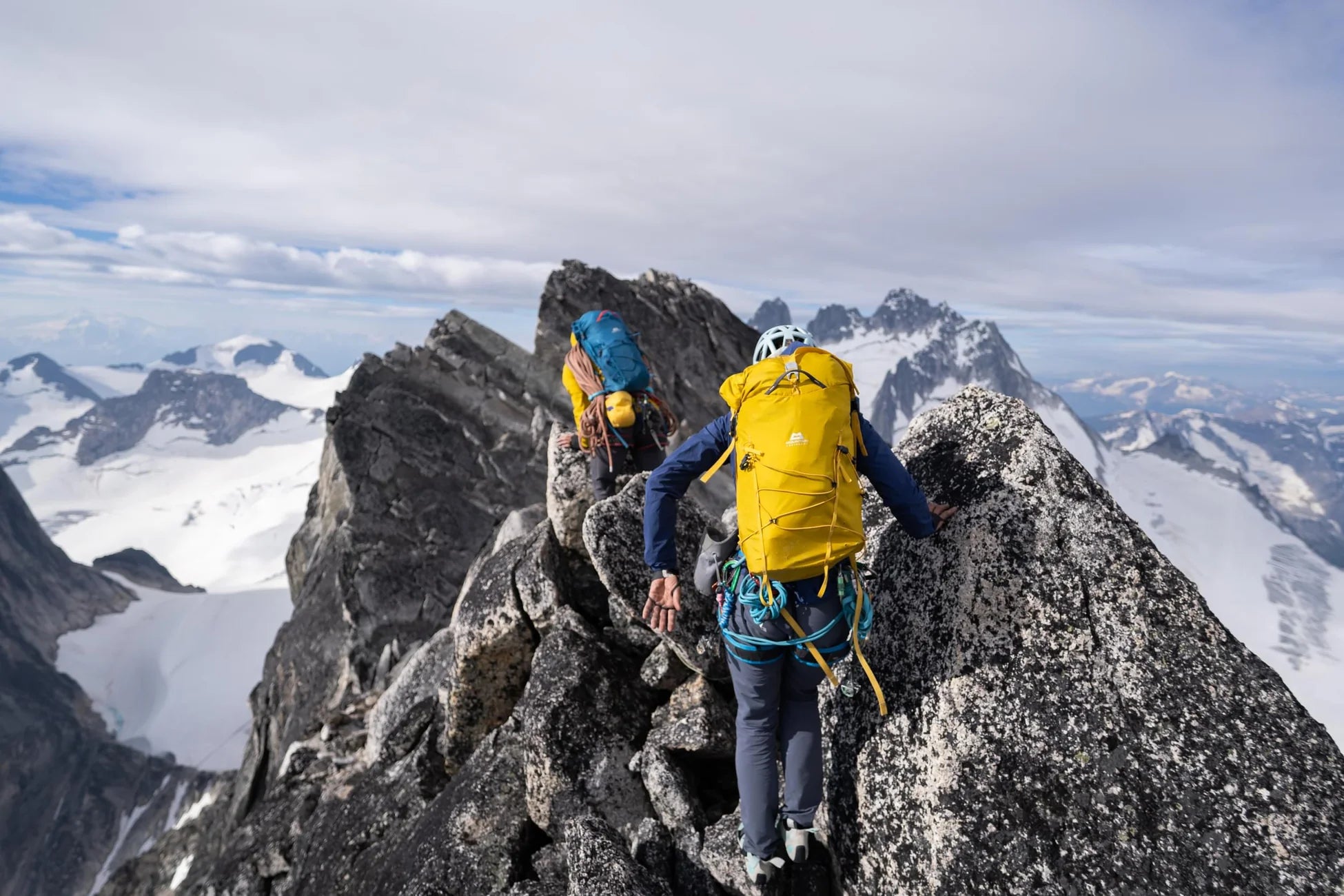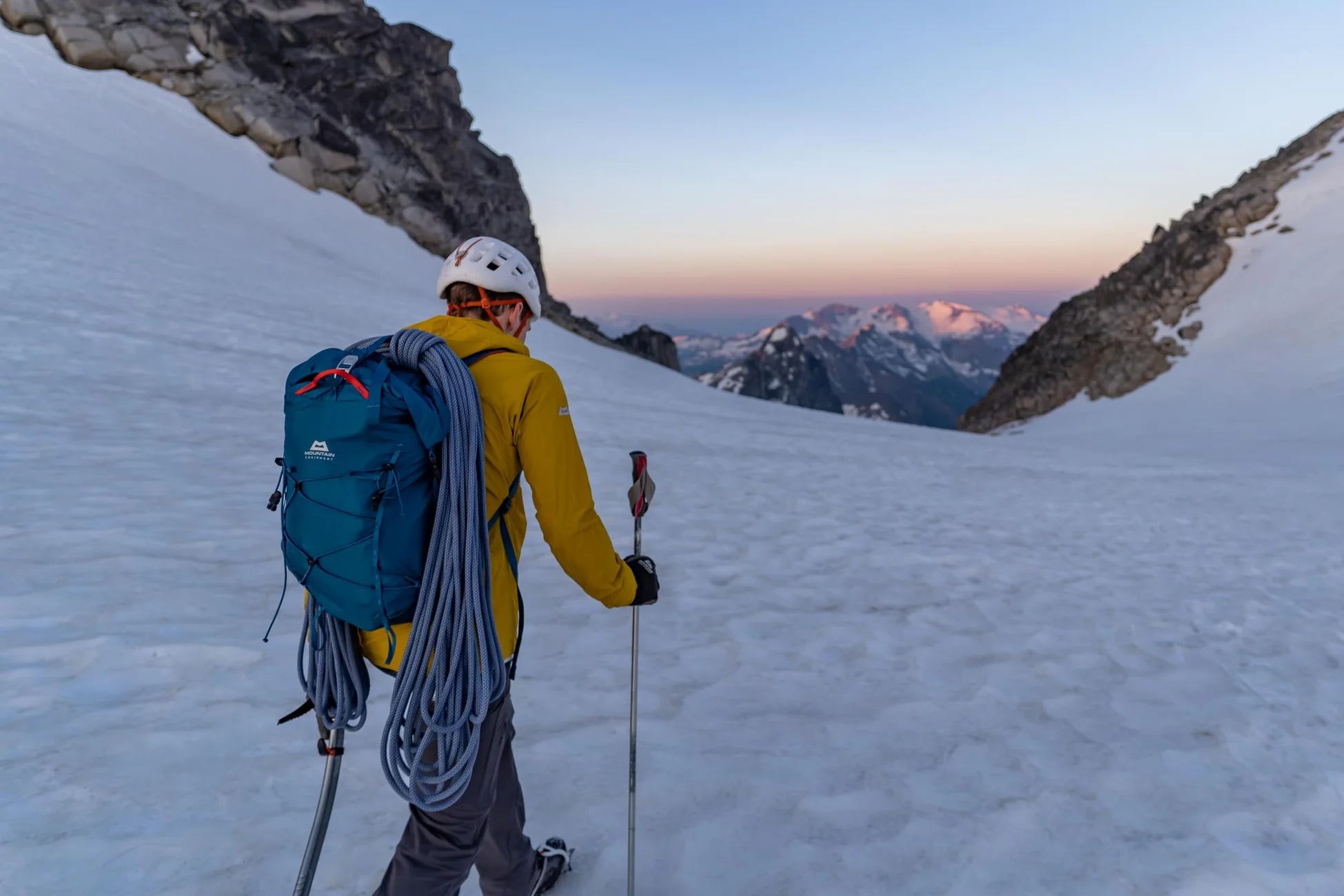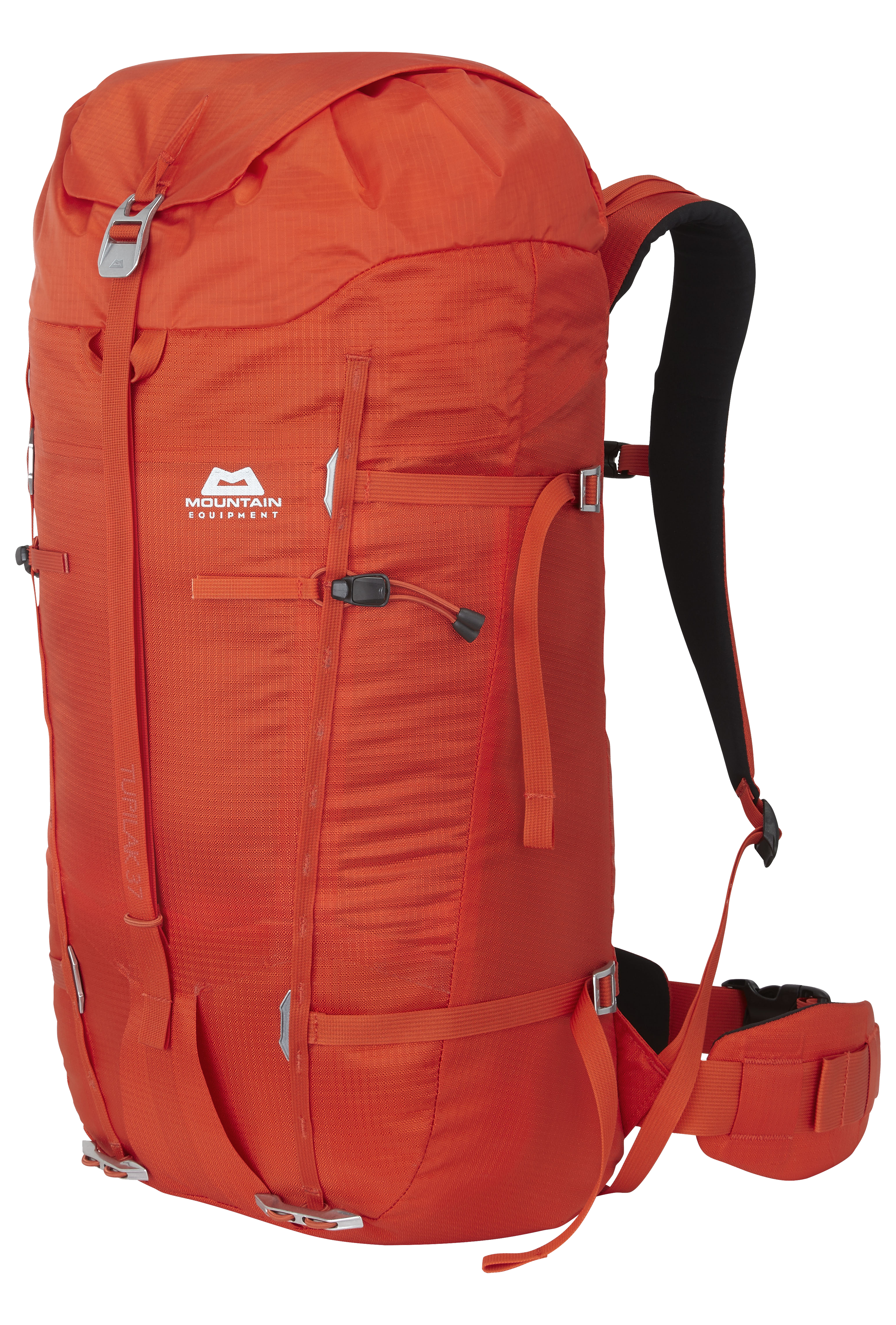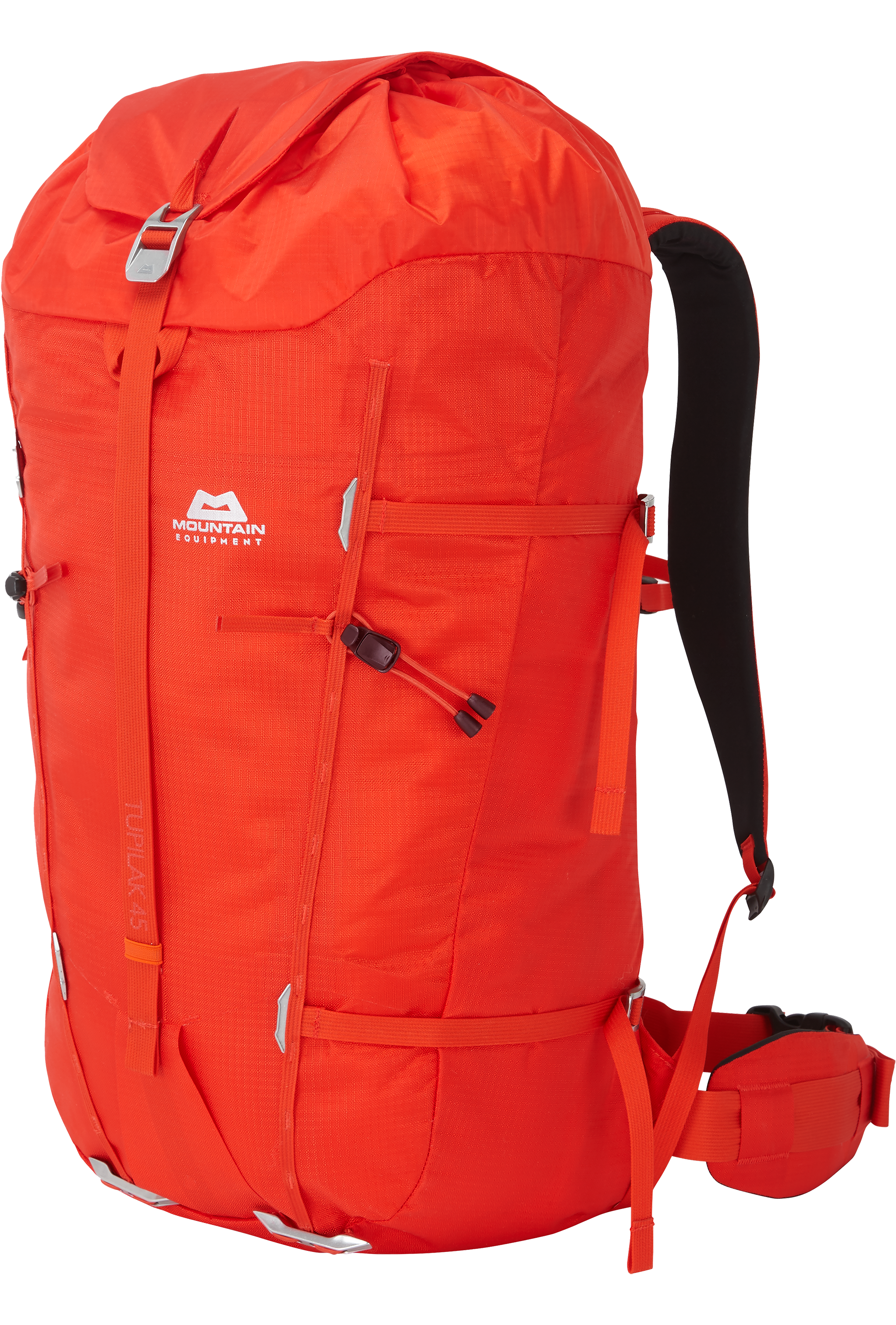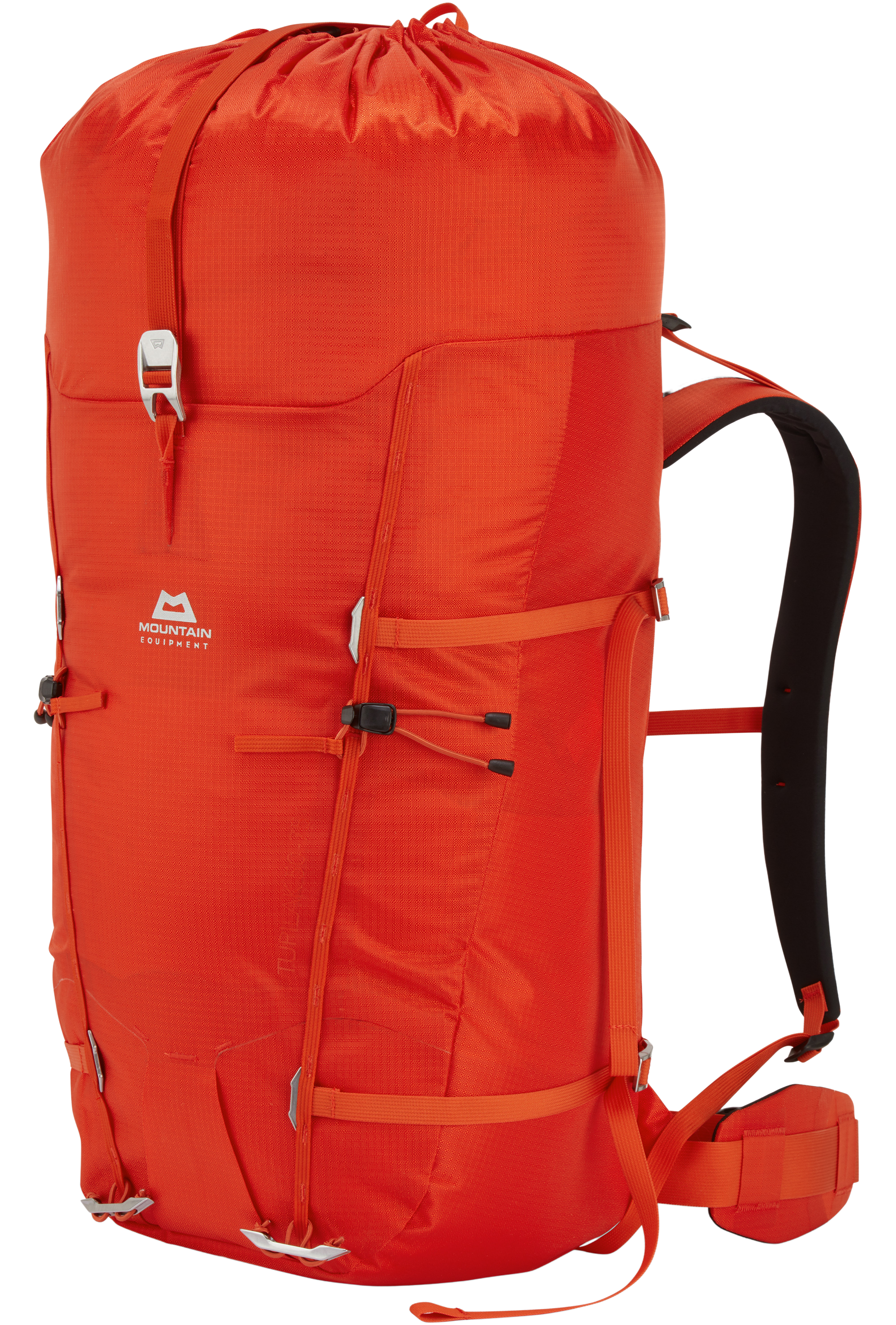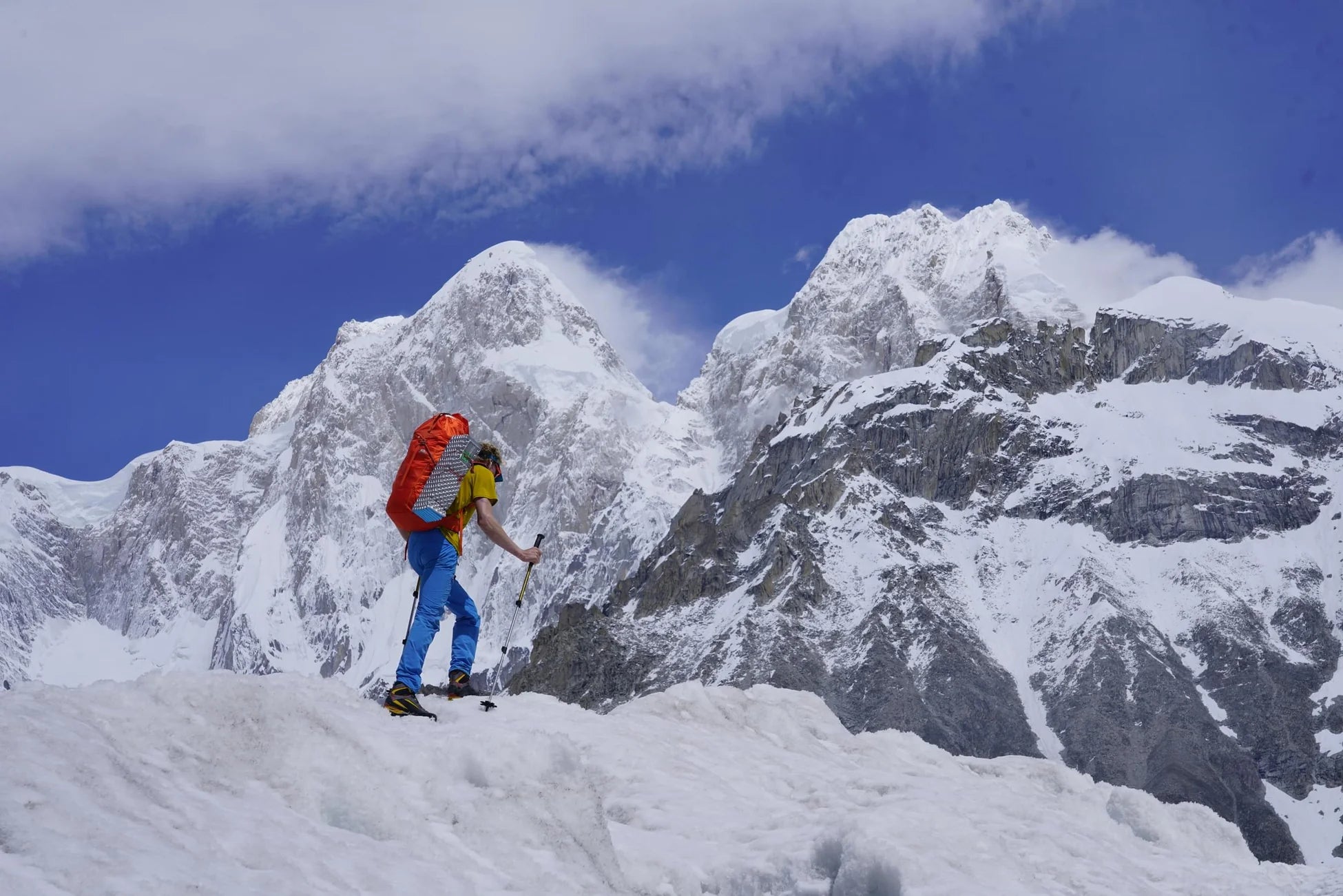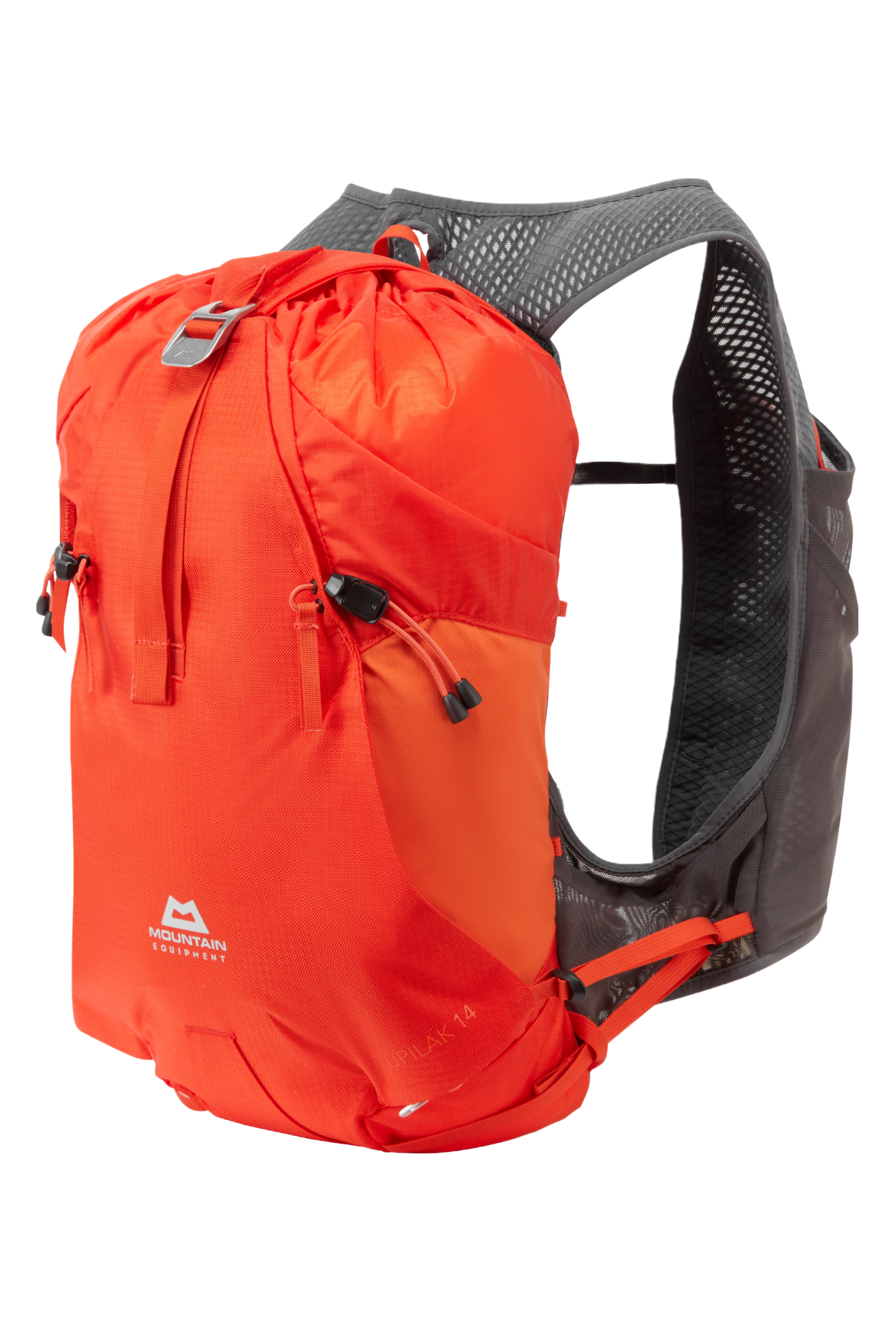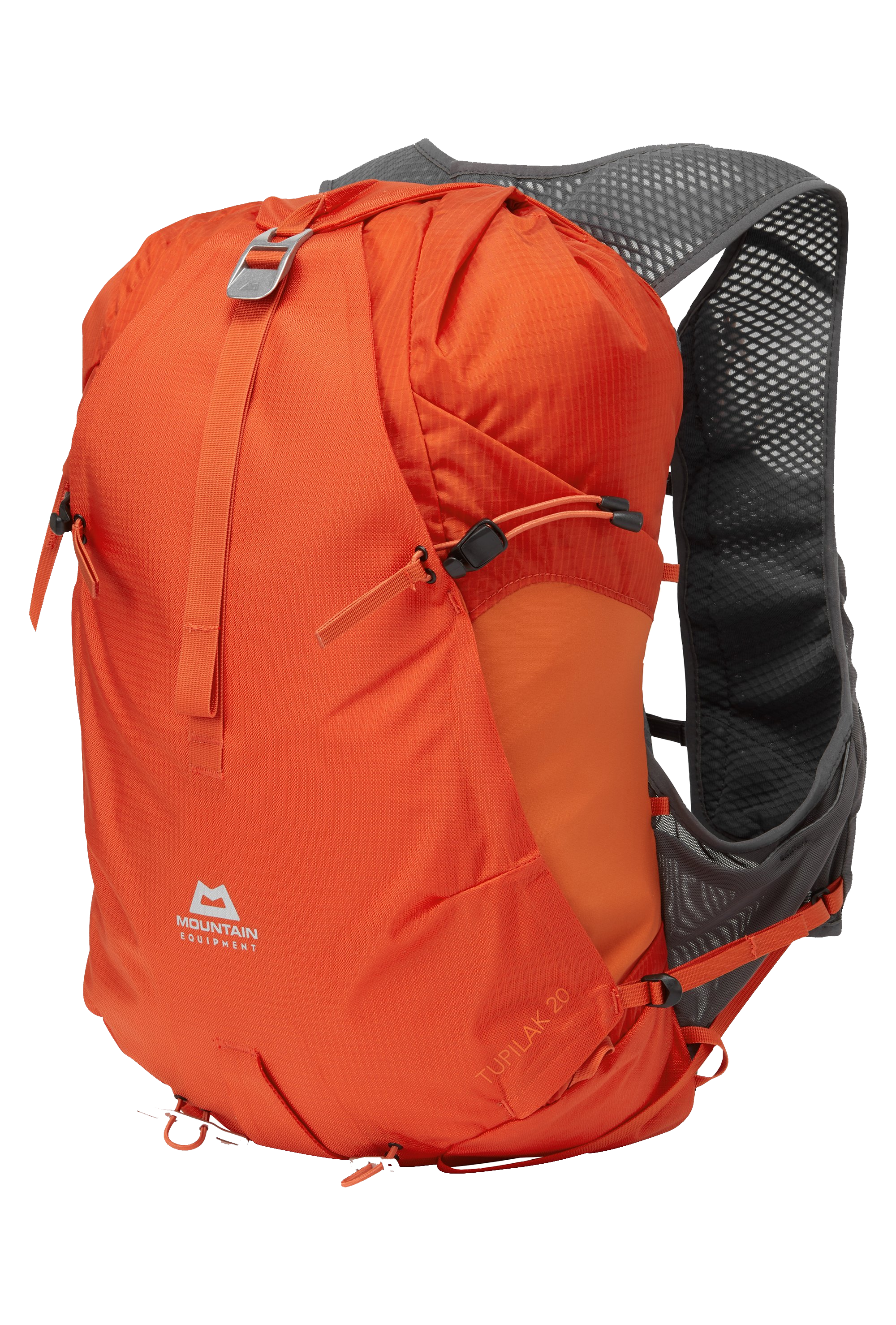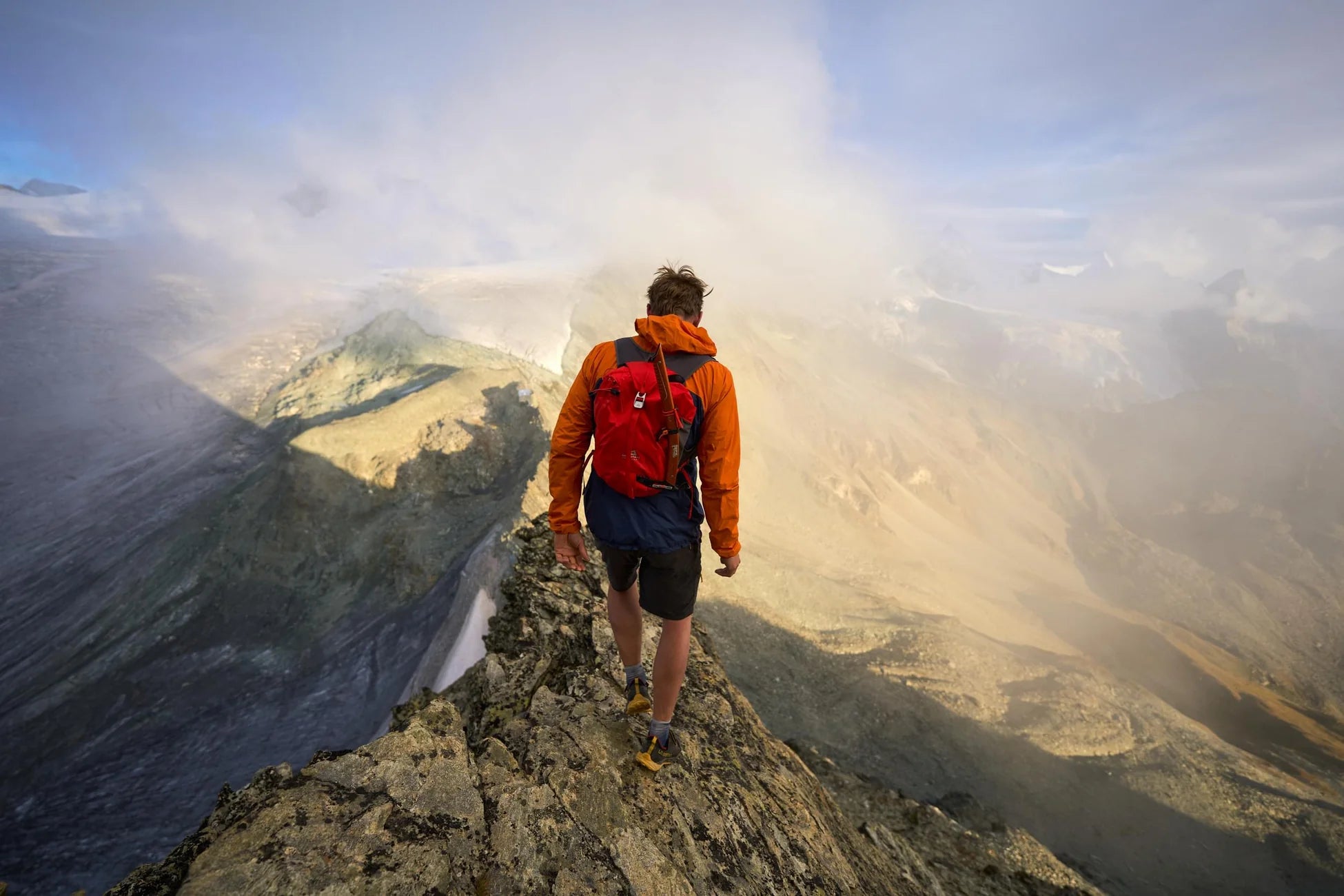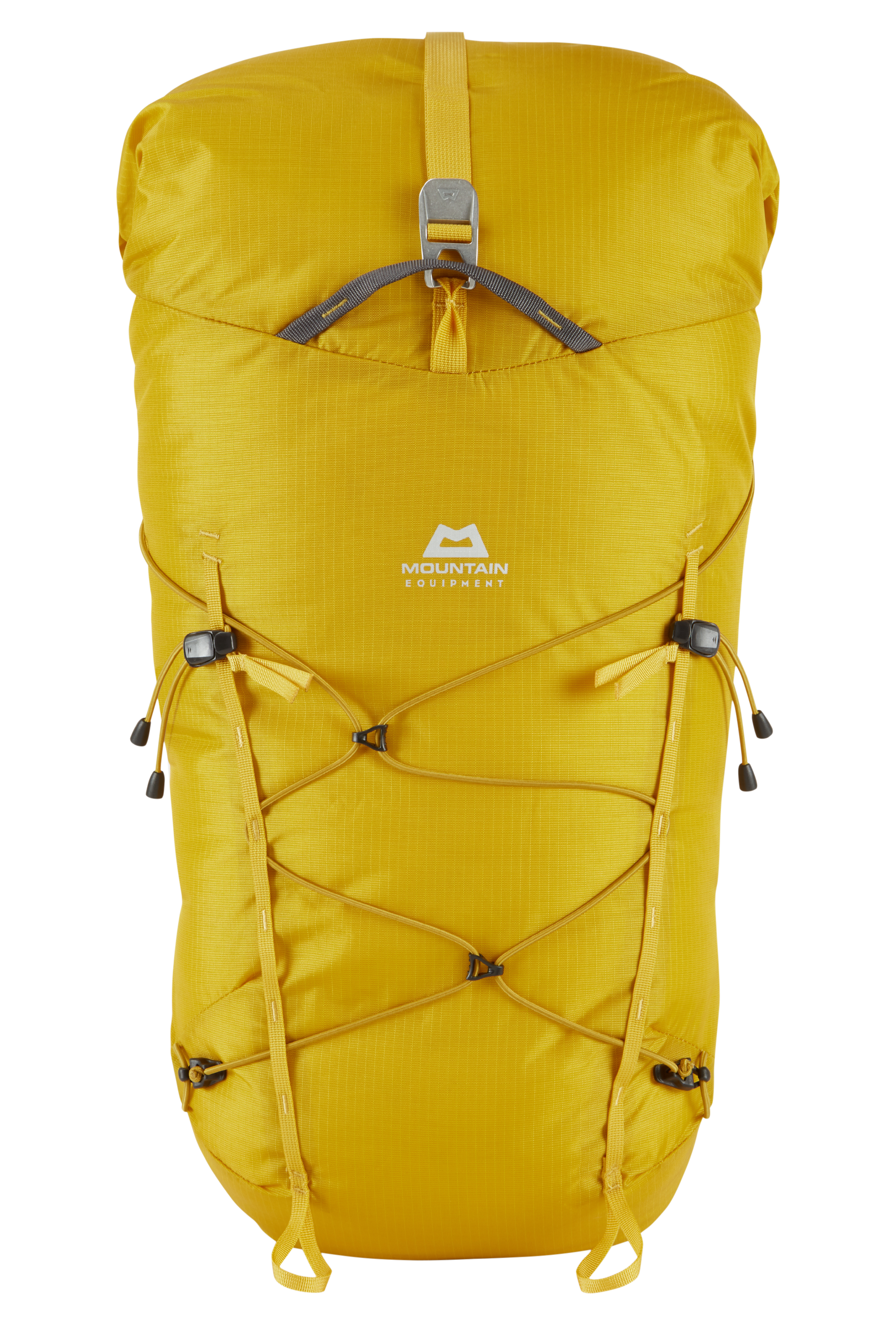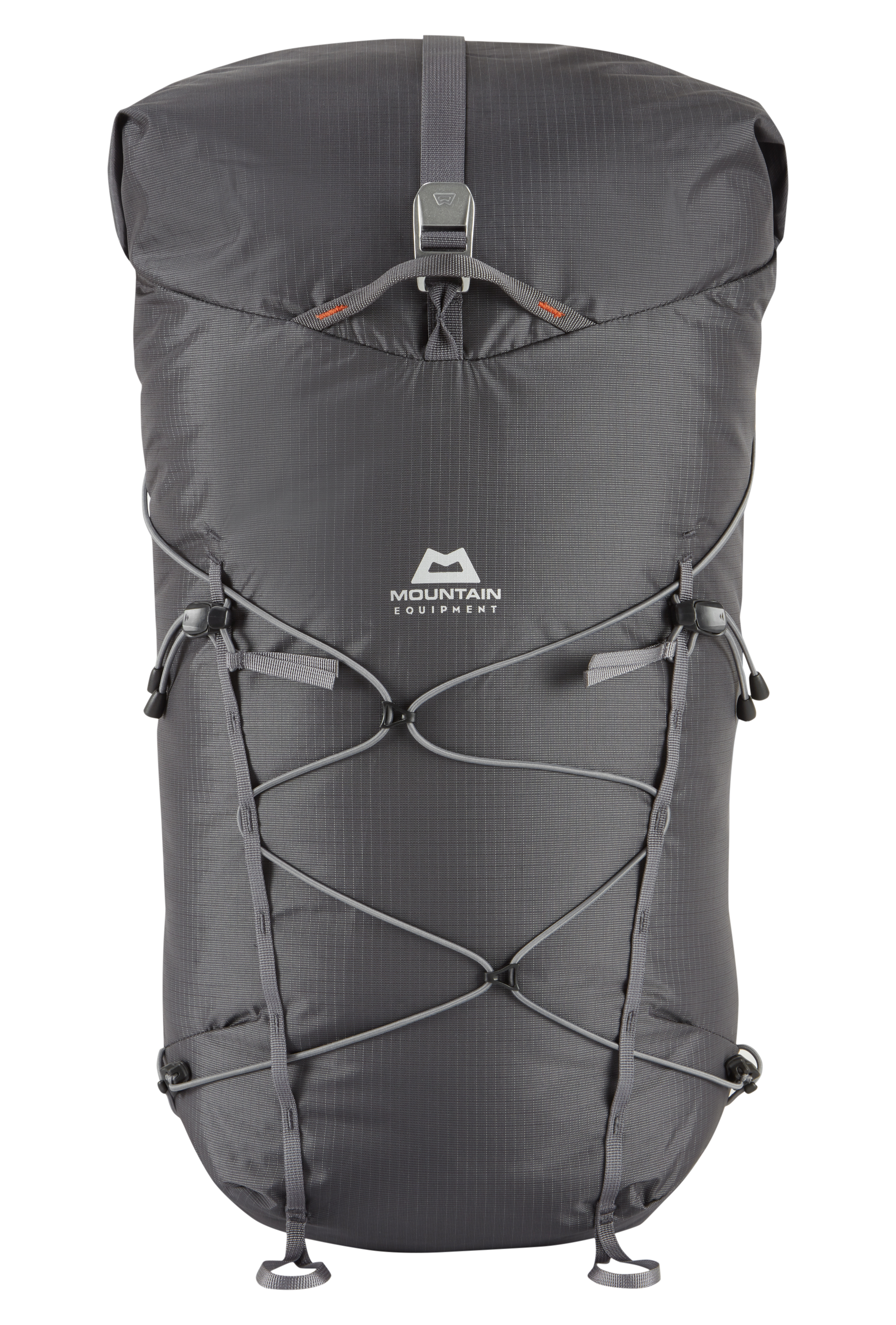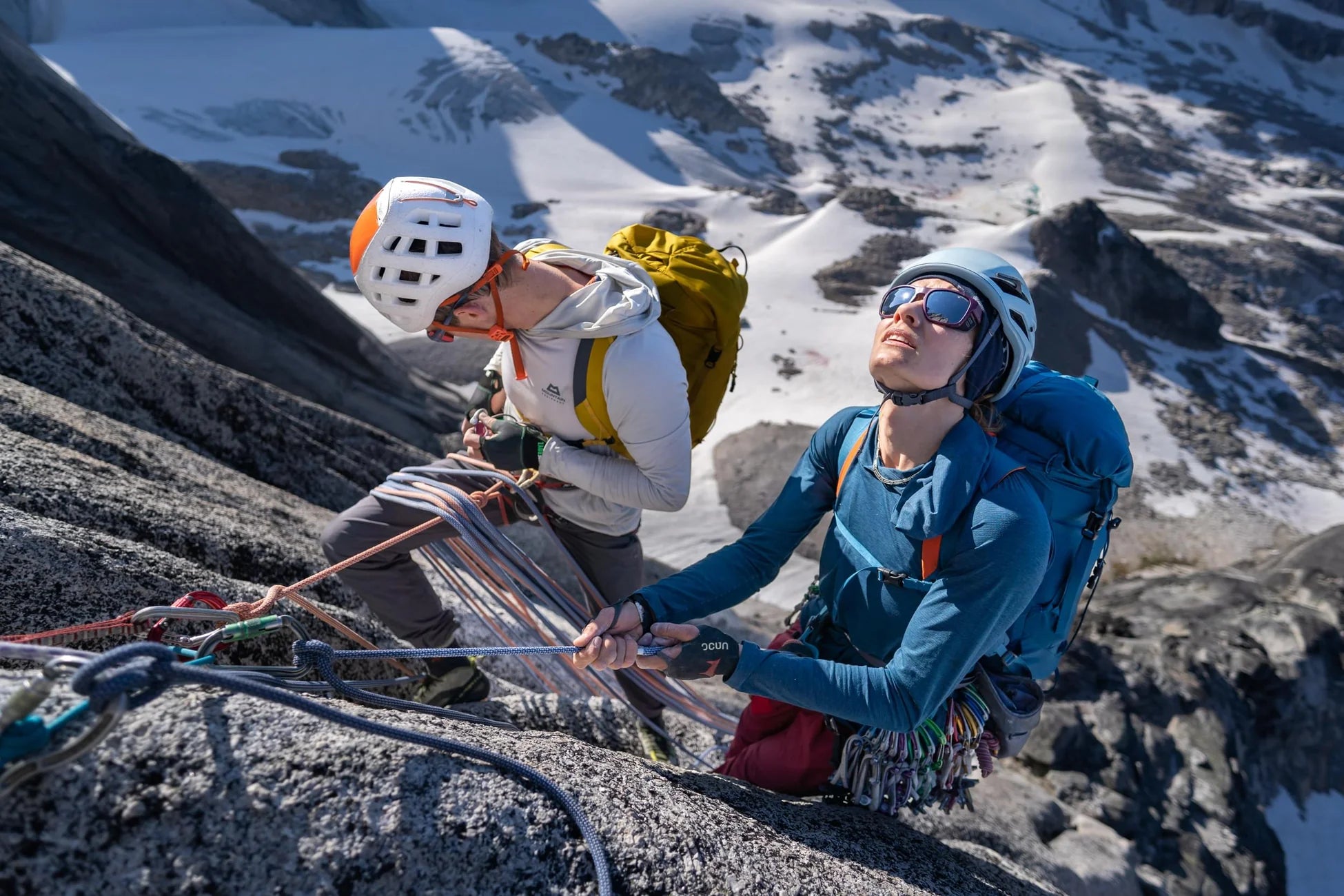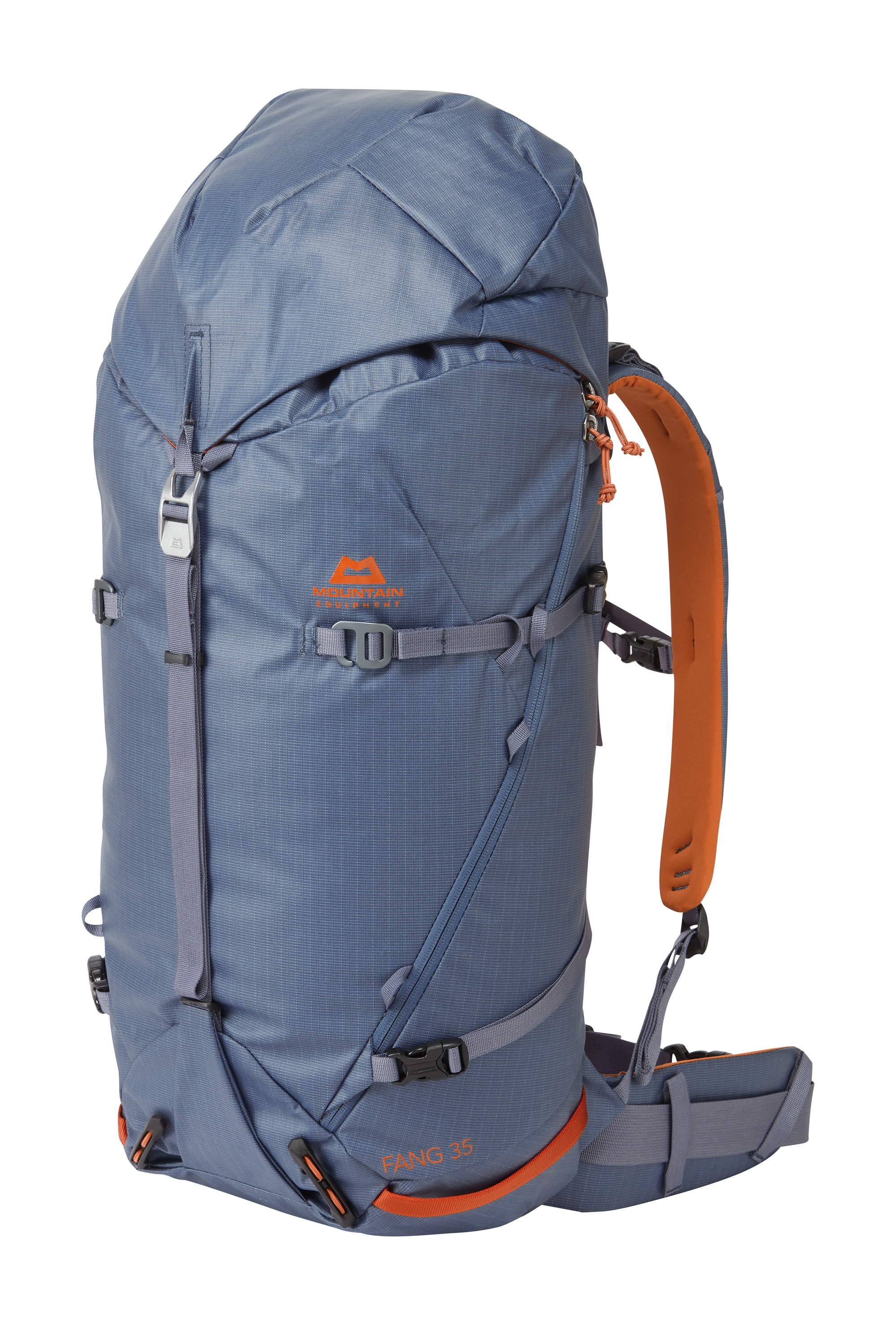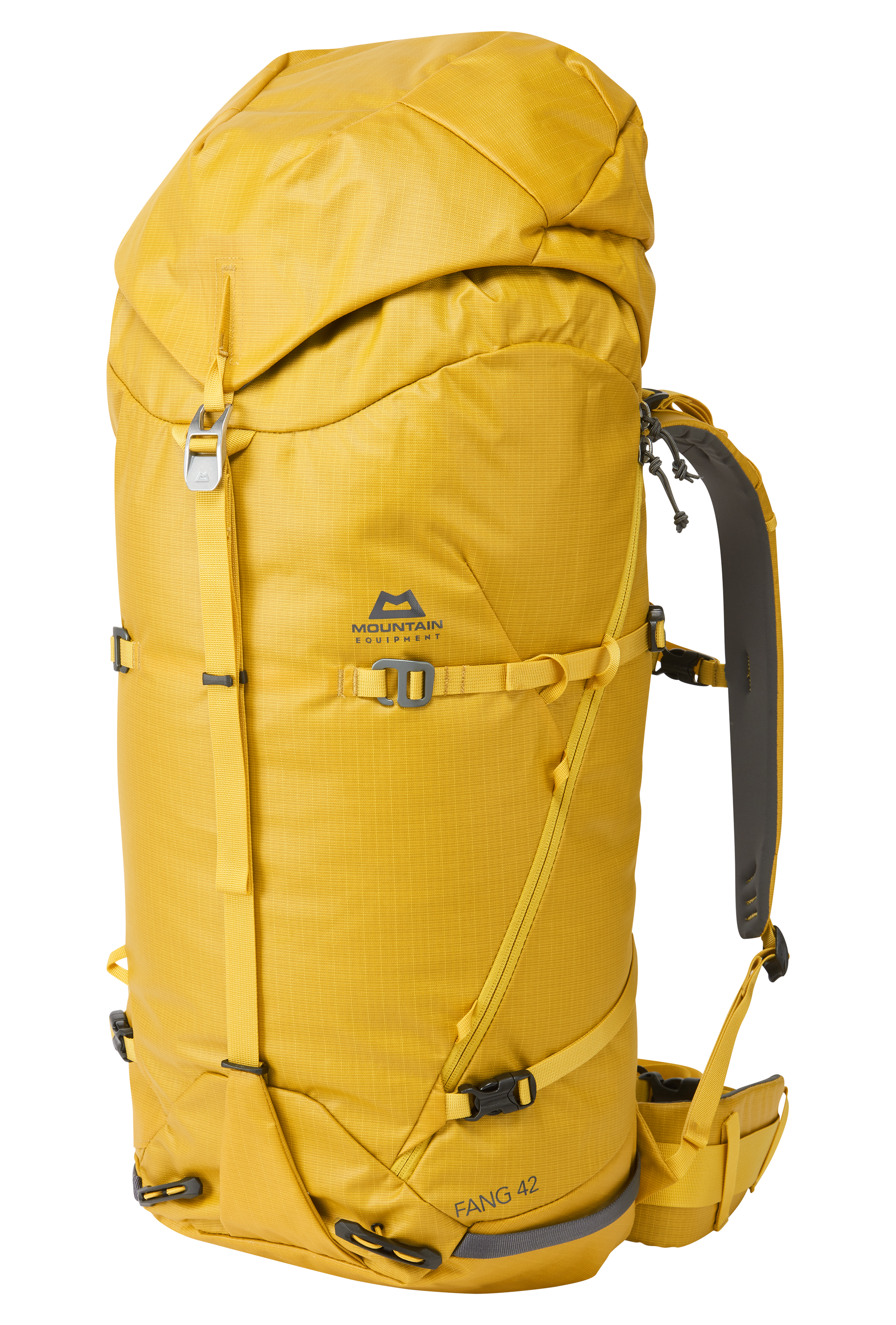Volumen
Wie groß muss mein Rucksack sein? Das ist eine der ersten Fragen, die du dir vor dem Rucksackkauf stellen solltest. Die Antwort hängt davon ab, wie lange du damit unterwegs sein willst, wie viel Ausrüstung du mitnehmen musst und wie "voluminös" diese ist. Außerdem ist die Rucksackgröße ein bisschen Geschmackssache: Es gibt Leute, die lieber größere Rucksäcke nutzen, weil das Packen dann einfacher ist. Andere haben lieber kleinere Rucksäcke, die dafür leichter und kompakter sind. Bei gutem, trockenen Wetter kannst du Ausrüstungsteile wie das Seil außen am Rucksack befestigen. Bei Regen und Schnee packst du lieber alles (was nicht nass werden soll) in den Rucksack.
Vorsicht beim Vergleich der Rucksackgrößen verschiedener Hersteller: So messen manche Marken das Volumen ihrer Rucksäcke inklusive aller Taschen (auch z.B. der Mesh-Außentaschen). Andere geben das Volumen des komplett vollgepackten Rucksacks an. Wir messen nach einem internationalen Standard, bei dem das Volumen eines "optimal gepackten" Rucksacks angegeben wird. In unseren Produktbildern sind die Rucksäcke gemäß dieses Standards gepackt. Das bedeutet für dich, dass unsere Rucksäcke immer ein paar Liter mehr fassen als das angegebene Volumen.
Gewicht
Wir geben für unsere Rucksäcke zwei Gewichtsangaben an: ein maximales und ein minimales Gewicht. Das maximale Gewicht bezieht sich auf den Rucksack inkl. aller im Lieferumfang enthaltenen Komponenten wie Kompressions- oder Befestigungsriemen. Das minimale Gewicht bekommst du, wenn du Komponenten wie Rückenpolster, Hüftflossen oder Befestigungsriemen abnimmst. Das nennen wir "minimalistisches Design". Natürlich könntest du das Rucksackgewicht noch weiter reduzieren, indem du Riemen kürzt oder andere Teile abschneidest – aber das ist unserer Meinung nach nicht sinnvoll und außerdem irreversibel...
Manche Hersteller machen Angaben zur maximal empfohlenen Beladung eines Rucksacks. Wir machen das nicht. Denn wir wissen, dass jeder Rucksack "im wahren Leben" an manchen Tagen überladen wird (werden muss) und egal wie groß der Rucksack ist, 25 kg zu tragen ist einfach immer unbequem!
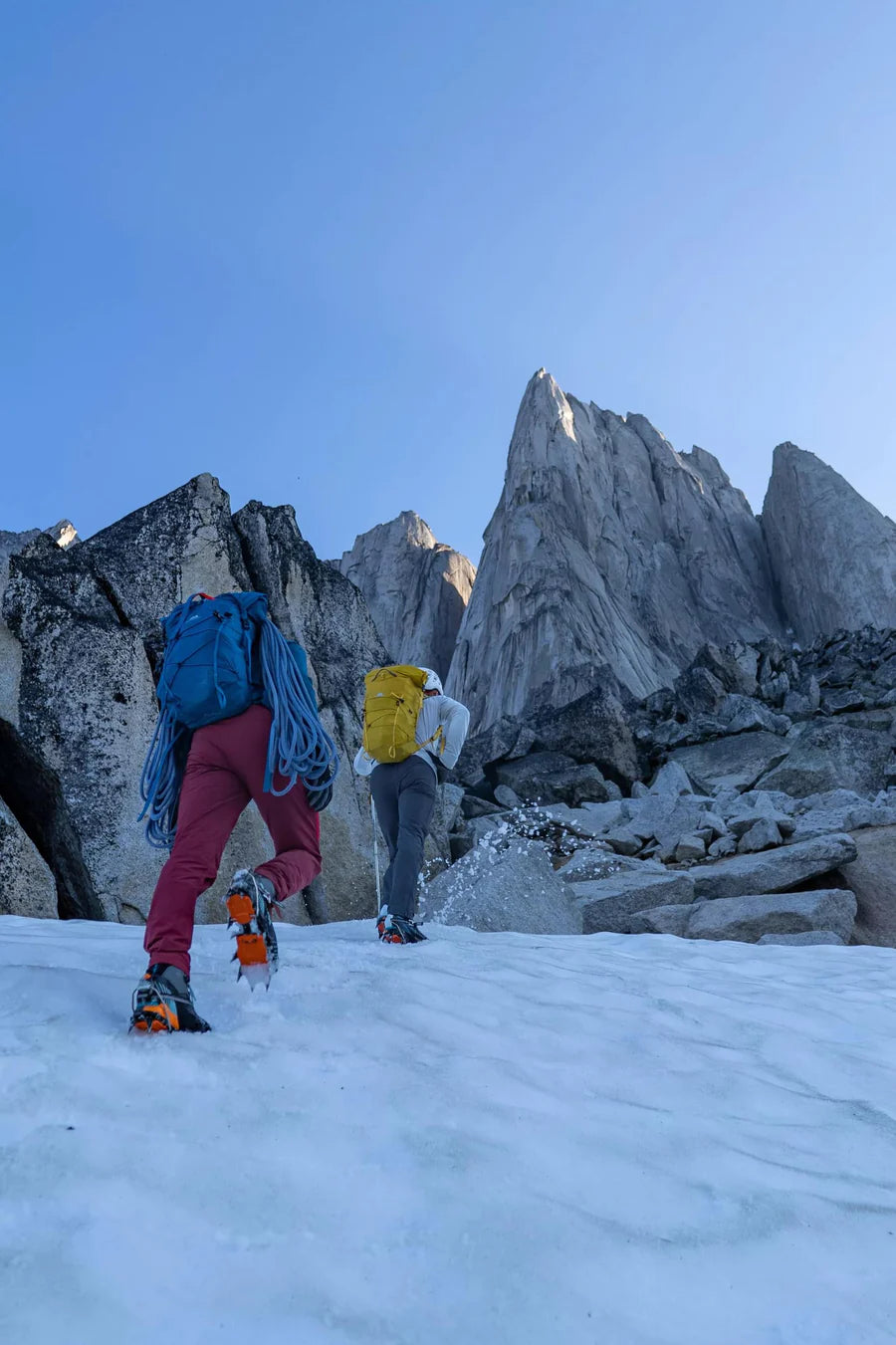
Die richtige Einstellung
Rucksäcke mit weniger als 25 Liter Volumen müssen nicht zwingend perfekt passen bzw. angepasst werden. Größere Rucksäcke, die mehr Last tragen, solltest du auf deinen Körper anpassen! Voraussetzung dabei ist, dass dir die Rückenlänge passt und der Rucksack so eingestellt wird, dass er eng am Körper liegt. Dafür solltest du den Rucksack beladen, denn ein leerer Rucksack sitzt immer anders als ein voller. Lockere dann alle Riemen und setzte den beladenen Rucksack auf. Platziere zunächst die Hüftflossen über deinen Beckenknochen und schließe den Hüftgurt. Zieh dann die Schultergurte an. Sie sollten immer am Körper anliegen, vor allem am Schulterblatt. Ziehe dann, falls vorhanden, die Lageverstellriemen (Riemen von den oberen Schultergurten zum Rucksackrücken) so an, dass der Rucksack mit angenehmen Druck fest auf deinem Rücken liegt. Als letztes schließt du den Brustgurt. Er sollte knapp über der Brust liegen und nicht zu sehr einengen. Jetzt sollte die Last gleichmäßig auf Becken, Rücken und die beiden Schultern verteilt sein.
Manche Kletterer bevorzugen den Rucksack etwas höher zu tragen, so dass er nicht auf den Klettergurt drückt. Dazu kannst du den Hüftgurt nach hinten (um den Rucksack herum) fixieren und die Schultergurte etwas fester anziehen.
Material
Das Material hat entscheidende Bedeutung für die Leistungsfähigkeit eines Rucksacks. Es muss vieles aushalten: UV-Strahlung, Abrieb, Risse. Und es kommt auf den Anwendungszweck an: Das Material eines kleinen, superleichten Rucksacks muss andere Anforderungen erfüllen als das eines alpinen Kletterrucksacks. Die Denier-Zahl (Fadenstärke) eines Materials ist ein guter erster Anhaltspunkt, wenn du verschiedene Materialien vergleichen willst. Je höher die Denier-Zahl, desto robuster ist ein Stoff in der Regel – wobei es mittlerweile auch Materialien mit Beschichtungen gibt, die trotz geringerer Denier-Zahl sehr robust sind. Wir haben sehr viel Energie in die Entwicklung unserer Rucksack-Materialien gesteckt. Herausgekommen sind Stoffe, die garantiet robust und wetterfest sind.
Rückensysteme
Das Rückensystem eines Rucksacks entscheidet darüber, wie bequem der Rucksack zu tragen ist. Rückensysteme aus dem gleichen Stoff wie der restliche Rucksack sparen Gewicht und sind sehr robust, nehmen jedoch Schweiß nicht so gut auf wie z.B. Schaumstoffplatten. Die wiederum haben oft im Winter das Problem, dass Schnee daran hängen bleibt und sie sind deutlich schwerer. Netzsysteme vermeiden Schwitzen am besten, haben allerdings eine schlechtere Lastenverteilung (das Gewicht ist weiter vom Rücken entfernt). Dadurch eigenen sie sich nicht so gut für schweres Gepäck. Zudem sind sie ausladender und dafür weniger für Klettern geeignet. Fazit: Welches Rückensystem am besten zu dir passt, hängt von deinen individuellen Vorlieben und dem geplanten Anwendungszweck ab.
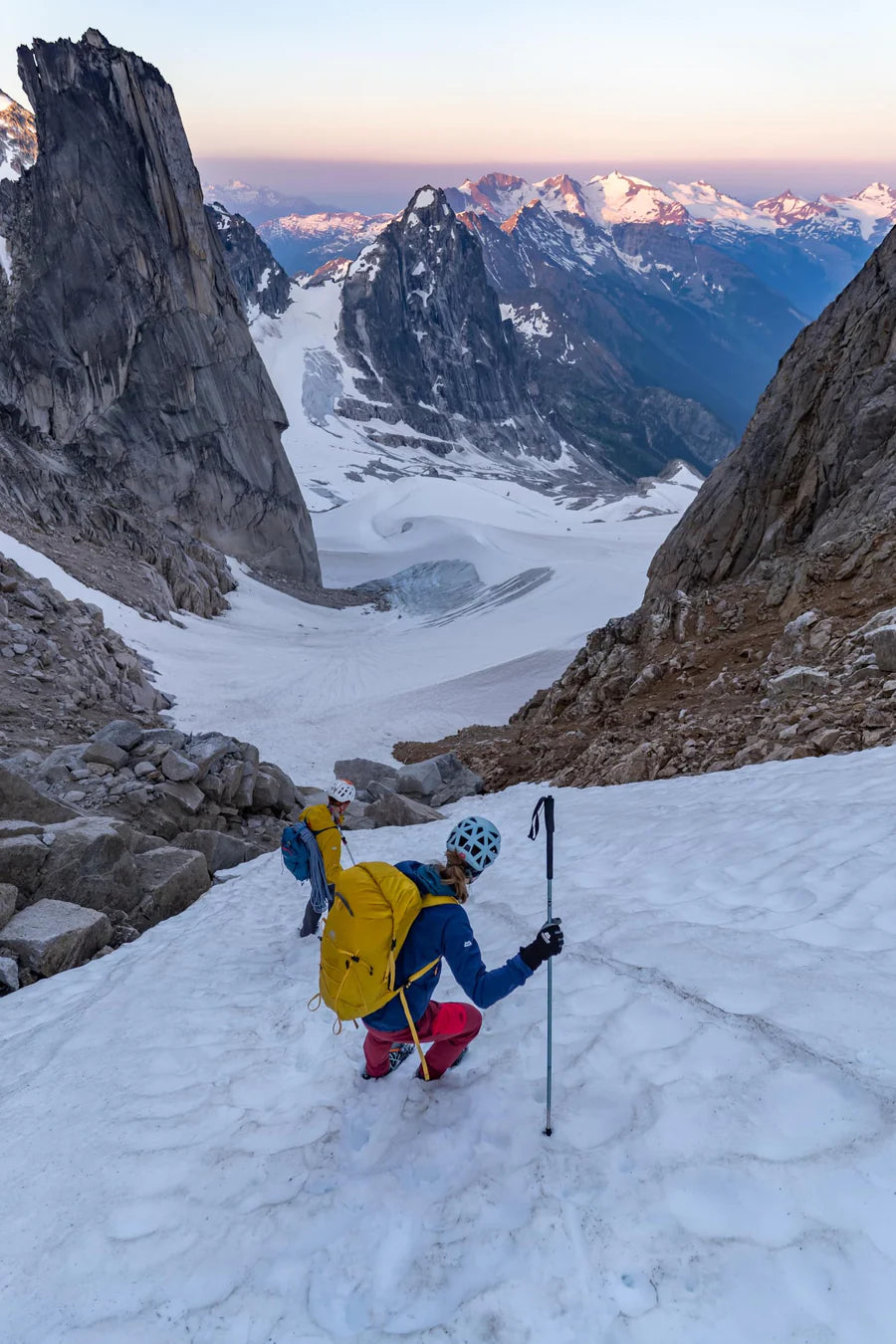
Wetterschutz
Es gibt wenige Rucksäcke, die wirklich wasserdicht sind. Selbst wenn ein Rucksack aus wasserdichtem Material ist, kann Wasser durch die Nähte eindringen. Getapte Nähte an Rucksäcken sind teuer und oft nicht von Dauer. Und selbst in einen wasserdichten Rucksack kommt irgendwann Feuchtigkeit, zum Beispiel wenn du nasse Handschuhe darin verstaust. Und dann hast du tatsächlich ein Problem, denn sobald einmal Feuchtigkeit im Rucksack ist, bekommst du sie nicht so schnell wieder heraus. Wir kennen einige Bergführer, die absichtlich Löcher in ihre wasserdichten Rucksäcke gemacht haben, damit Feuchtigkeit wieder entweichen kann...
Ein anderer Versuch sind Regenhüllen, doch sie halten meist auch nicht alles ab, verrutschen gerne oder bleiben irgendwo hängen, verhindern den Zugang zum Rucksackinneren, sind eine gefährliche Angriffsfläche für Wind und können nicht benutzt werden, wenn du einen Pickel am Rucksack befestigen willst. Mit anderen Worten: Rucksack-Regenhüllen sind in harmlosen Gelände hilfreich, haben am Berg aber nichts verloren.
Wir konstruieren alle unsere Rucksäcke so, dass sie so viel Regen wie möglich abhalten, indem wir so wenige Nähte wie möglich einsetzen, die Öffnungen möglichst wetterfest designen und wetterfeste oder sogar wasserdichte Materialien verwenden. Dennoch sind unsere Rucksäcke nicht absolut wasserdicht. Daher empfehlen wir bei wirklich schlechtem Wetter alles, was nicht nass werden darf, in wasserdichte Packsäcke zu packen.
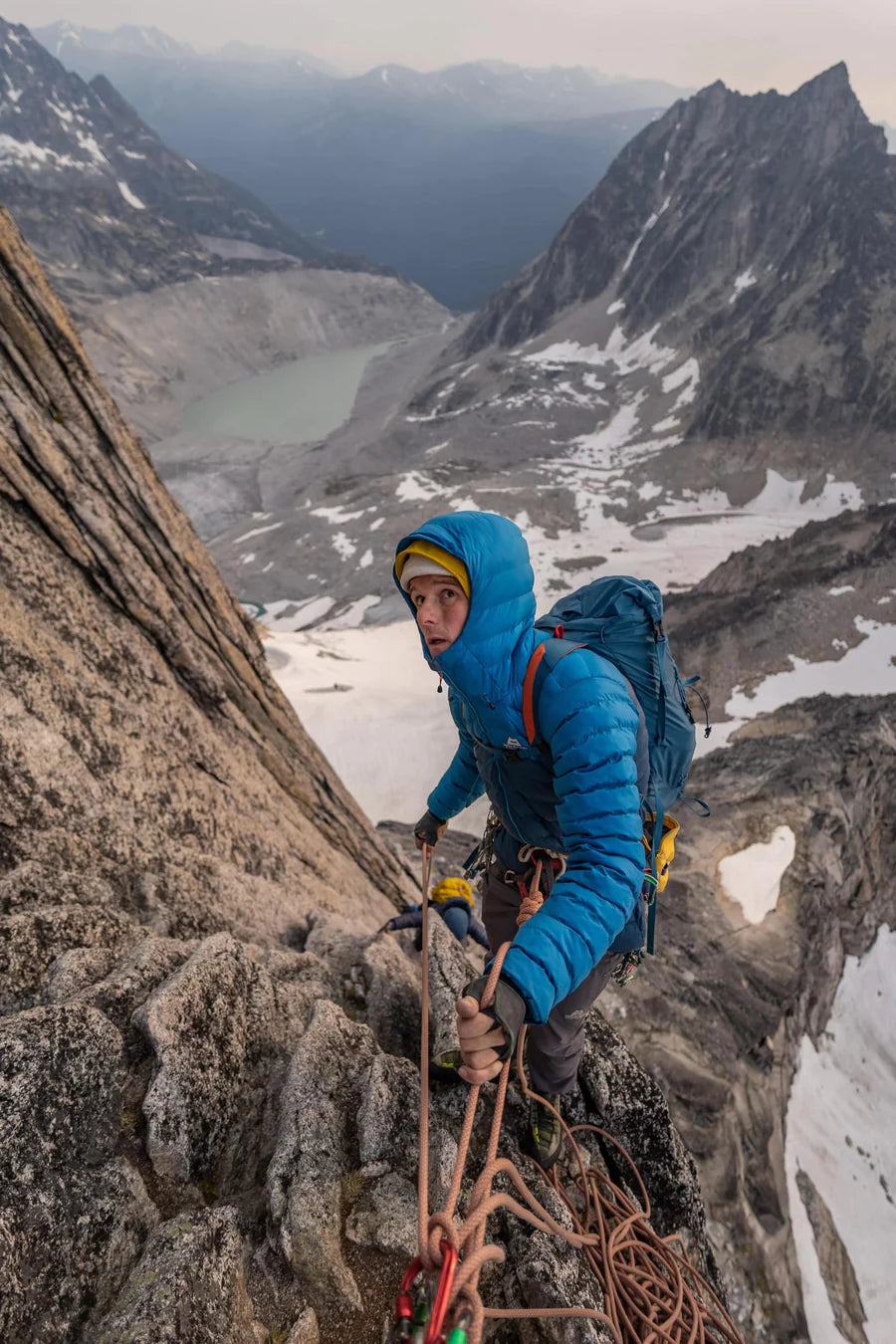
Packtipps
Es braucht Erfahrung und einige Selbstversuche, um herauszufinden, wie und wo du deine Ausrüstung am besten verstaust. Ein paar wenige pauschale Tipps gibt es aber: Packe Sachen, die du selten oder erst am Ende des Tages brauchst, ganz nach unten. Gleiches gilt für schwere, voluminöse Teile wie z.B. das Seil. Schwere Sachen sollten möglichst nah am Rücken platziert werden. Ersatzkleidung solltest du immer wasserdicht (z.B. in wasserdichten Packsäcken) verpacken, außer es ist wirklich stabil trocken. Manche packen das gesamte Essen gerne ordentlich zu einem Päckchen zusammen. Bei schlechtem Wetter oder wenn du schnell unterwegs sein willst, kann es jedoch besser sein unter dem Gehen zu essen. Dann solltest du deine Verpflegung aufgeteilt und griffbereit transportieren.
Am besten transportierst du so viel wie möglich IM Rucksack. Manche Ausrüstung, so wie Ski, Pickel oder sperrige Isomatten, packst du aber besser außen an den Rucksack. Mit etwas Geschick kann man fast alles an fast jedem Rucksack befestigen. Besser, stabiler und sicherer ist es aber einen Rucksack zu nutzen, der für den Transport dieser Gegenstände eigene Halterungen hat.
Mit oder ohne Deckelfach
Früher waren Rucksäcke mit Deckelfach gang und gäbe – das ist heute nicht mehr so. Ein Deckelfach bietet guten Wetterschutz, Platz für ein separates Wertsachenfach und bleibt zugänglich selbst wenn der Rucksack komplett vollgestopft ist. Auf der anderen Seite erhöht es Gewicht und Packmaß und hängt schlaff herunter, wenn der Rucksack leer ist. Heute gibt es auch Rucksäcke, die ohne Deckelfach Wetterschutz und ein gut zugängliches separates Wertsachenfach bieten. Ob du einen Rucksack mit oder ohne Deckelfach möchtest, ist also vor allem Geschmackssache bzw. abhängig vom Einsatzzweck. In manchen Fällen ist der Komfort eines Deckelfachs wichtiger, in anderen ein schlanker, leichter Rucksack.
Einsatzzweck
Am besten überlegst du dir vorab, für was für Touren du einen Rucksack einsetzten möchtest. Es gibt gute Allroundmodelle, die du für viele verschiedene Aktivitäten nutzen kannst. Aber für manche Bergsportdisziplinen sollte dein Rucksack bestimmte Eigenschaften haben: Beim Skitourengehen musst du deine Ski einfach und sicher außen am Rucksack befestigen können. Wichtig ist dabei auch, dass das Material robust genug ist, um nicht sofort von den Skikanten zerschnitten zu werden. Ein Rucksack fürs Winterbergsteigen sollte einigermaßen wetterfest sein und Befestigungsmöglichkeiten für Eisgeräte haben. Wenn du mit Rucksack klettern gehen willst, sollte er stabil sein und eng am Körper anliegen, damit du dich frei beim Klettern bewegen kannst.
Duffle Bags
Schlicht, unglaublich robust und absolut verlässlich. Expeditionstaschen und Taschen für Ausrüstung sind auf längeren Trips essentiell. Die robusten Taschen von Mountain Equipment haben sich schon überall auf der Welt bewährt und halten einiges aus - egal ob im Flugzeug, auf Packtieren oder dem Packschlitten.
Rucksäcke zum Haulen
Wenn du in schwierigem Gelände kletterst, kann es nötig sein deinen Rucksack wie einen Haulbag nachzuziehen (haulen). Unsere Rucksäcke haben Schlaufen zum Haulen. Wir empfehlen aber das Hauling Seil zum Nachziehen an so vielen Stellen des Rucksacks wie möglich zu befestigen (nicht nur an den Hauling Schlaufen). Wenn der Rucksack beim Nachziehen irgendwo hängenbleibt, wirken enorme Kräfte auf die Befestigungsschlaufen – wohl dem, der hier für Redunanz gesorgt hat.
Entdecke unsere Kollektion
Für Alpinisten, Wanderer und Reisende auf der ganzen Welt. Unsere Rucksäcke und Taschen sind eine ideale Kombination aus Gewicht, Haltbarkeit und Leistung. So erreicht jeder sein Ziel.
Tupilak | Einfach funktionell
Wir haben eine sehr genaue Vorstellung vom perfekten Alpinrucksack: Schlicht soll er sein. Leicht soll er sein. Und extrem strapazierfähig. Er soll uns beim Klettern nicht einschränken und gleichzeitig alles tragen, was wir brauchen - und nichts, was wir nicht brauchen.
Tupilak Vest Packs
Die Tupilak Vest Pack Serie verbindet die Leichtigkeit einer Running-Weste mit der Robustheit und den Funktionen eines Kletterrucksacks.
Orcus
Mit seinem geringen Gewicht ist der Orcus bestens geeignet für Mehrseillängenrouten und lange alpine Klassiker.
Fang
Vielseitiger Allroundrucksack für mehrtägige, alpine Hüttentouren, Wintertouren und Abenteuer in abgelegeneren Gebieten. Mit dem flexiblen Deckel lässt sich das Volumen unkompliziert erweitern.


